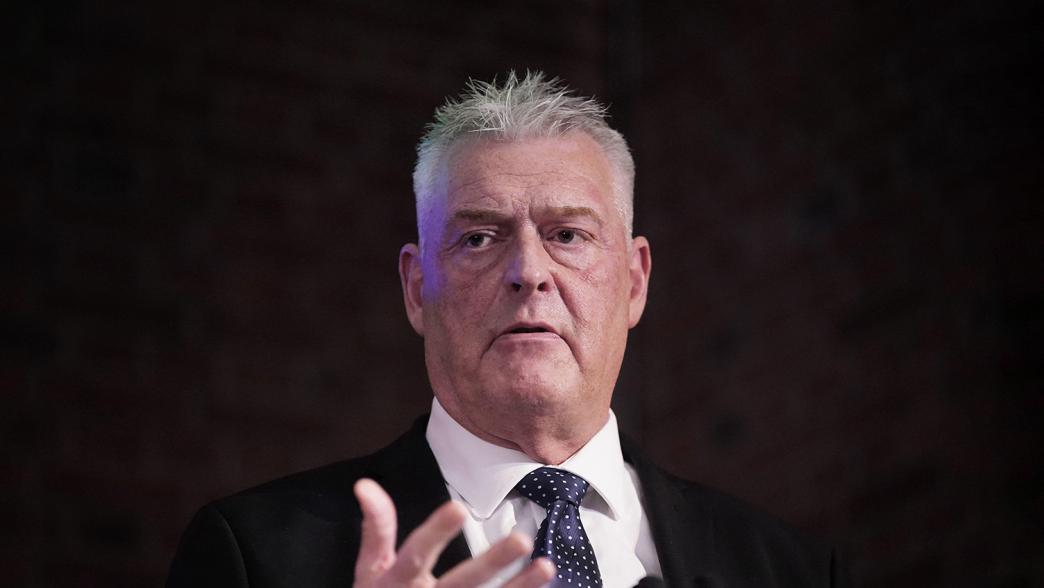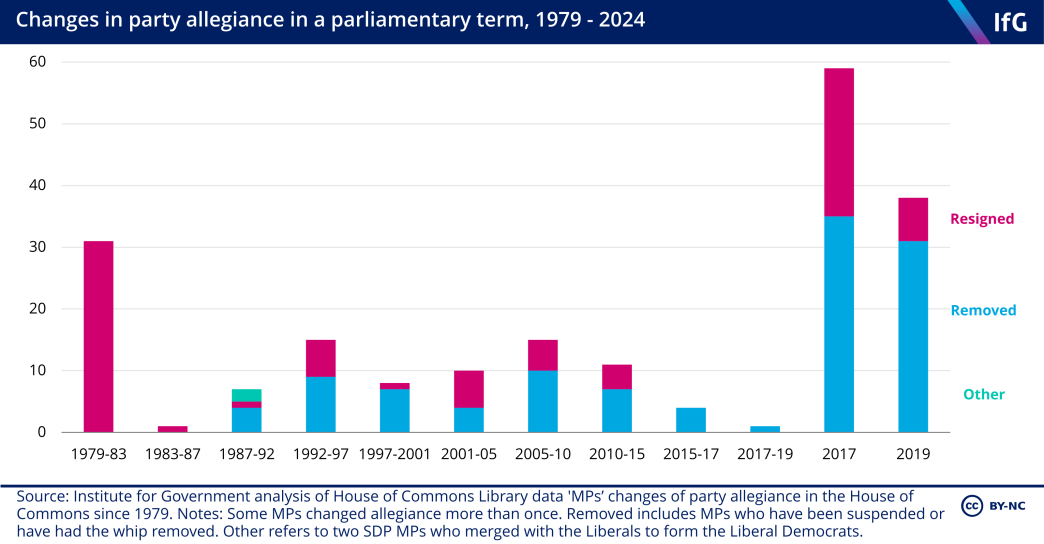MPs who change party allegiance
What happens when MPs change political parties?

When Lee Anderson joined Reform on 11 March 2024, the former Conservative MP became the 37th MP to change party allegiance during this parliamentary term.
How do MPs change political parties?
MPs are allowed to change their party affiliation at any time. This is often referred to as “crossing the floor”, because the MP will usually change from sitting on the government benches to the opposition benches or vice versa. This is allowed because individual MPs, rather than parties, are elected to the House of Commons, so even if the member changes their party, they remain the chosen representative of their constituency.
Why do MPs change allegiance?
There are a range of reasons why MPs change their affiliation in the House of Commons. They could feel their views are better represented by another party, by defecting to a new political party, or joining another party after being suspended from their original party. They may also choose to sit as an independent MP. Several recent examples of crossing the floor include Christian Wakeford, the MP for Bury South, who switched from Conservative to Labour due to dissatisfaction with then prime minister Boris Johnson’s leadership of the party and Lisa Cameron, who left the SNP in 2023 - over claims of mistreatment and bullying by other SNP colleagues – to join the Conservative party.
MPs can also change their party affiliation if they have the whip removed or are suspended from the party. This is when the chief whip of a party or the party leadership chooses to expel a member. In these cases, the member can choose to continue as an independent MP. For example, former leader of the Labour party Jeremy Corbyn currently sits as an independent MP after having the whip removed in 2020. MPs who have had the whip removed can choose to join another party if the whips or leadership from that party are willing to accept them.
How often do MPs change allegiance?
There have been 200 cases where MPs have changed allegiance since 1979. Just over half (56%) had the whip removed or were suspended, and 43% resigned from their party.
The 2017-2019 parliament had a high number of changes in party allegiance. In total 18 MPs resigned and 33 had the whip withdrawn (some moved more than once resulting in 59 changes in total). These figures reflect the unrest of the post-Brexit years in the House of Commons. In February 2019, eight Labour and three Conservative MPs defected in response to their parties’ stance on Brexit. They later set up Change UK. On 3 September 2019, 21 Conservative MPs had the whip withdrawn when they voted against the government and backed a motion in favour of legislation to delay the date the UK formally exited the EU.
A total of 37 MPs have left, or been removed from, their party in the current parliamentary term. The most recent was Lee Anderson who was suspended by the Conservative party in February 2024 and then joined Reform UK in March.

Do MPs who leave their party face any sanctions?
There are no formal sanctions facing an MP who decides to leave their party. They may, however, face pressure from other MPs and the public.
An MP who leaves their party can remain in their seat as there are no rules requiring them to stand down or face a by-election. The convention is that MPs are elected directly to represent their constituency and they can continue to do this as an independent or member of another party. However, some MPs have chosen to resign their seats to re-contest them in a by-election for their new party. This has not been done since 2014, when the two Conservative MPs, Douglas Carswell and Mark Reckless, switched their allegiance to UKIP and then successfully contested by-elections.
There have been some attempts to change this rule in the past, although only through private members' bills. Both Chris Skidmore in 2011 and Anthony Mangnall in 2020 introduced private members' bills to require a by-election if an MP changed parties. However, neither of these bills made it to second reading and so were not passed.
Many MPs who leave their party either stand down at the next election or find they are unsuccessful in retaining their seat. Others are more successful in extending their parliamentary career. Alan Howarth left the Conservatives to join Labour in 1995, and was re-elected as a Labour MP in 1997. He later earned the accolade of being the only person since 1979 to serve as a government minister for two different parties.
- Political party
- Conservative
- Legislature
- House of Commons
- Publisher
- Institute for Government